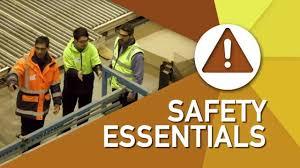Occupational Safety and Health Administration, Industrial Safety Animation, and Industrial Safety: A Complete Guide

Safety is a fundamental part of every organisation, especially in industries where heavy machinery, chemical use, and high-risk activities are part of everyday operations. To ensure safer workplaces, businesses rely on global safety standards, advanced training tools, and robust safety systems. In this article, we discuss three important pillars of workplace protection: Occupational Safety and Health Administration, Industrial Safety Animation, and industrial safety .
1. Occupational Safety and Health Administration (OSHA)
The Occupational Safety and Health Administration, commonly known as OSHA, is a regulatory body responsible for setting and enforcing workplace safety standards. Although OSHA operates primarily in the United States, its guidelines are followed globally due to their reliability and effectiveness.
Role of OSHA in Workplace Safety
OSHA’s purpose is to ensure that workers have a safe and healthy work environment. To achieve this, OSHA:
-
Develops safety regulations for various industries
-
Conducts inspections to ensure compliance
-
Provides training and educational resources
-
Enforces penalties for violations
-
Promotes safety awareness across workplaces
These regulations cover areas such as hazardous substances, fall protection, electrical safety, machine safeguarding, and emergency preparedness.
Why OSHA Standards Matter Worldwide
Even outside the U.S., organisations follow OSHA guidelines because:
-
They are globally trusted and updated regularly
-
They help companies reduce accidents and legal risks
-
They promote uniform safety practices across international operations
For companies aiming to meet international safety standards, OSHA compliance acts as a strong foundation.
2. Industrial Safety Animation: A New Era of Safety Training
As workplaces adopt digital learning tools, industrial safety animation has become one of the most effective ways to train employees. These animated videos transform complex safety concepts into simple, visual, and engaging content that employees can easily understand.
Benefits of Industrial Safety Animation
-
Better Engagement: Animated scenarios capture attention more effectively than text-based instructions.
-
Realistic Demonstrations: Simulations show accidents, machinery operations, and emergency procedures realistically.
-
Cost-efficient: Once created, the animation can be used repeatedly for training new and existing workers.
-
Improved Retention: Visual learning helps employees remember safety rules longer.
-
Safe Practice Environment: Workers can learn about high-risk situations without being exposed to real danger.
Where Industrial Safety Animation Is Used
You can find these animations in industries such as:
-
Manufacturing
-
Oil and gas
-
Construction
-
Warehousing and logistics
-
Chemical plants
-
Heavy engineering
From lockout-tagout procedures to fire safety, animations make even complex safety rules accessible and easy to grasp.
3. Industrial Safety: Protecting Workers in High-Risk Environments
Industrial safety refers to the systems, policies, and practices used to prevent accidents, manage risks, and ensure safe operations in industrial workplaces. It involves everything from hazard control and PPE usage to emergency response planning.
Core Components of Industrial Safety
A strong industrial safety program usually includes:
-
Risk assessment & hazard identification
-
Safety training and awareness programs
-
Emergency preparedness and evacuation planning
-
Use of PPE and safety equipment
-
Routine inspections and audits
-
Incident reporting and investigation
-
Compliance with safety standards such as OSHA and ISO
These components ensure that both employees and employers understand their roles in maintaining a safe work environment.
Why Industrial Safety is Essential
Investing in industrial safety results in:
-
Reduced accidents and downtime
-
Higher employee morale and confidence
-
Better productivity and workflow continuity
-
Lower legal liabilities and insurance costs
-
Stronger reputation and compliance with government regulations
The combination of preventive measures, employee awareness, and continuous monitoring creates a culture where safety becomes a daily habit rather than a responsibility.
- Art
- Causes
- Crafts
- Dance
- Drinks
- Film
- Fitness
- Food
- Jogos
- Gardening
- Health
- Início
- Literature
- Music
- Networking
- Outro
- Party
- Religion
- Shopping
- Sports
- Theater
- Wellness


